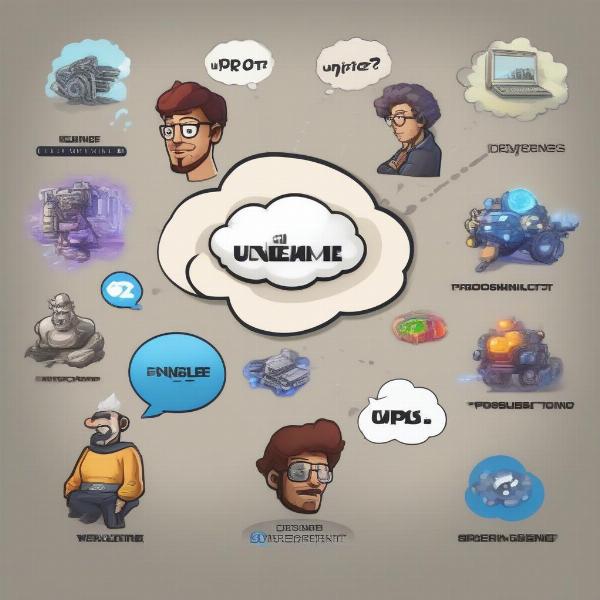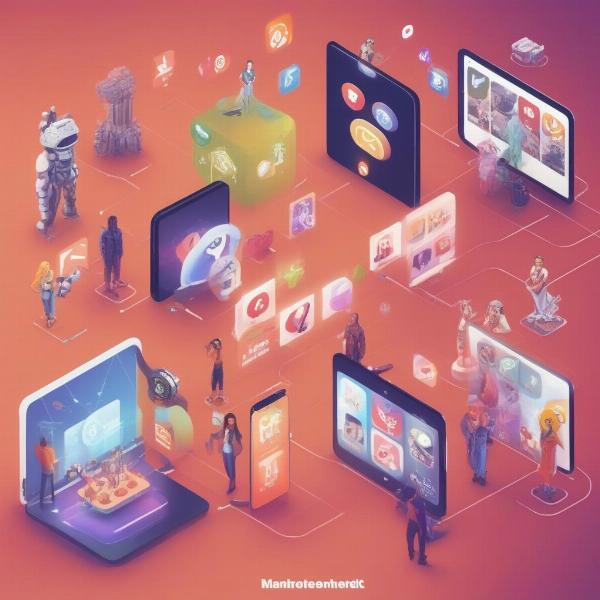Creating an iOS game can seem daunting, but with the right approach and resources, it’s an achievable goal. Whether you’re a seasoned developer or just starting out, this guide will provide you with the essential steps and knowledge to bring your game idea to life on the App Store. This comprehensive walkthrough covers everything from choosing the right game engine to navigating the App Store submission process.
Similar to preparing for a soccer game mentally, planning is key. Before diving into code, it’s crucial to have a solid game concept and a well-defined plan. Think about the genre, target audience, core mechanics, and overall visual style. A detailed game design document will serve as your roadmap throughout the development process.
Choosing the Right Game Engine
Selecting the appropriate game engine is paramount to your success. There are numerous options available, each with its own strengths and weaknesses. Some popular choices for iOS game development include:
- Unity: A versatile and widely used engine known for its cross-platform capabilities and extensive community support. It offers a user-friendly interface and a vast asset store, making it a great choice for both beginners and experienced developers.
- Unreal Engine: Renowned for its stunning graphics and powerful performance, Unreal Engine is ideal for creating visually impressive games. However, it has a steeper learning curve than Unity.
- SpriteKit: Apple’s native 2D game engine, SpriteKit, is specifically designed for iOS and offers seamless integration with Apple’s ecosystem. It’s a good option for developing 2D games with a focus on performance and simplicity.
Which engine best suits your needs depends on your project’s scope, your technical skills, and your desired visual style. Consider factors like performance requirements, 2D vs. 3D development, and ease of use when making your decision.
 Choosing the Right Game Engine for iOS Game Development
Choosing the Right Game Engine for iOS Game Development
Programming Your iOS Game
Once you’ve chosen your game engine, the next step is to start programming. This stage involves bringing your game mechanics to life, implementing user interface elements, and integrating art assets. Depending on the engine you’ve chosen, you’ll likely be using either C#, C++, or Swift. Understanding the fundamentals of programming is essential, and there are numerous online resources available to help you learn.
If you’re interested in how game developers add more waypoints, this article on how to add more waypoints game master offers valuable insights.
Designing the User Interface and User Experience (UI/UX)
A well-designed user interface is crucial for providing a positive player experience. The UI should be intuitive, easy to navigate, and visually appealing. Consider the placement of buttons, menus, and other interactive elements to ensure they are accessible and don’t obstruct gameplay. A seamless user experience will keep players engaged and immersed in your game.
Integrating Art and Sound
Art and sound play a vital role in creating an immersive and engaging game experience. High-quality visuals and sound effects can greatly enhance the overall quality of your game. If you don’t have the skills to create your own assets, consider using resources like the Unity Asset Store or hiring freelance artists and sound designers.
 Integrating Art and Sound Assets into an iOS Game
Integrating Art and Sound Assets into an iOS Game
Testing and Refining Your Game
Thorough testing is critical to identifying and fixing bugs, optimizing performance, and ensuring a polished final product. Test your game on various iOS devices to check for compatibility issues and performance variations. Gather feedback from playtesters to identify areas for improvement in gameplay, UI/UX, and overall game design.
This process is comparable to playing Playstation games on a different platform, like the ROG Ally. Check out this article on how to play playstation games on rog ally to learn more about cross-platform compatibility.
Publishing Your iOS Game on the App Store
Once your game is thoroughly tested and refined, it’s time to submit it to the App Store. This process involves creating an Apple Developer account, preparing your game for submission, and adhering to Apple’s guidelines. Ensure your game meets Apple’s quality standards and provides accurate information in the app description and screenshots.
Monetization Strategies for iOS Games
Consider how you want to monetize your game. Popular monetization strategies include in-app purchases, advertisements, and premium pricing. Choose a strategy that aligns with your game’s genre and target audience.
Marketing Your iOS Game
Once your game is live on the App Store, effective marketing is essential to reach your target audience and drive downloads. Utilize social media, online communities, and influencer marketing to promote your game. Creating a compelling trailer and providing press kits can also help generate buzz and attract players.
 Marketing an iOS Game on the App Store
Marketing an iOS Game on the App Store
Just as understanding who won the Ravens Browns game impacts fan engagement, knowing your target audience is crucial for marketing. You might find this article on who won the ravens browns game helpful in understanding audience engagement. Another insightful resource is is the video game company legit, which can help you understand the importance of trust and reputation in the gaming industry.
Further Development and Updates
After launching your game, continue to monitor player feedback and identify areas for improvement. Regular updates with new content, bug fixes, and performance optimizations can keep players engaged and extend the lifespan of your game.
Conclusion
Developing an iOS game is a challenging yet rewarding endeavor. By following this guide and utilizing available resources, you can navigate the process effectively and bring your game idea to fruition on the App Store. Remember to focus on creating a high-quality, engaging experience for your players, and don’t be afraid to experiment and iterate throughout the development process. Now, take the first step and start building your iOS game!
FAQ
-
What programming languages are used for iOS game development?
Swift, C#, C++, and Objective-C are common choices. -
How long does it take to make an iOS game?
The development time varies greatly depending on the complexity of the game. -
What are some popular iOS game engines?
Unity, Unreal Engine, and SpriteKit are among the most popular choices. -
How much does it cost to publish a game on the App Store?
You’ll need to enroll in the Apple Developer Program, which has an annual fee. -
How can I market my iOS game effectively?
Social media, online communities, and influencer marketing are effective strategies. -
What are some common monetization strategies for iOS games?
In-app purchases, advertisements, and premium pricing are common monetization models. -
How do I submit my game to the App Store?
You’ll need to prepare your game according to Apple’s guidelines and submit it through App Store Connect.

